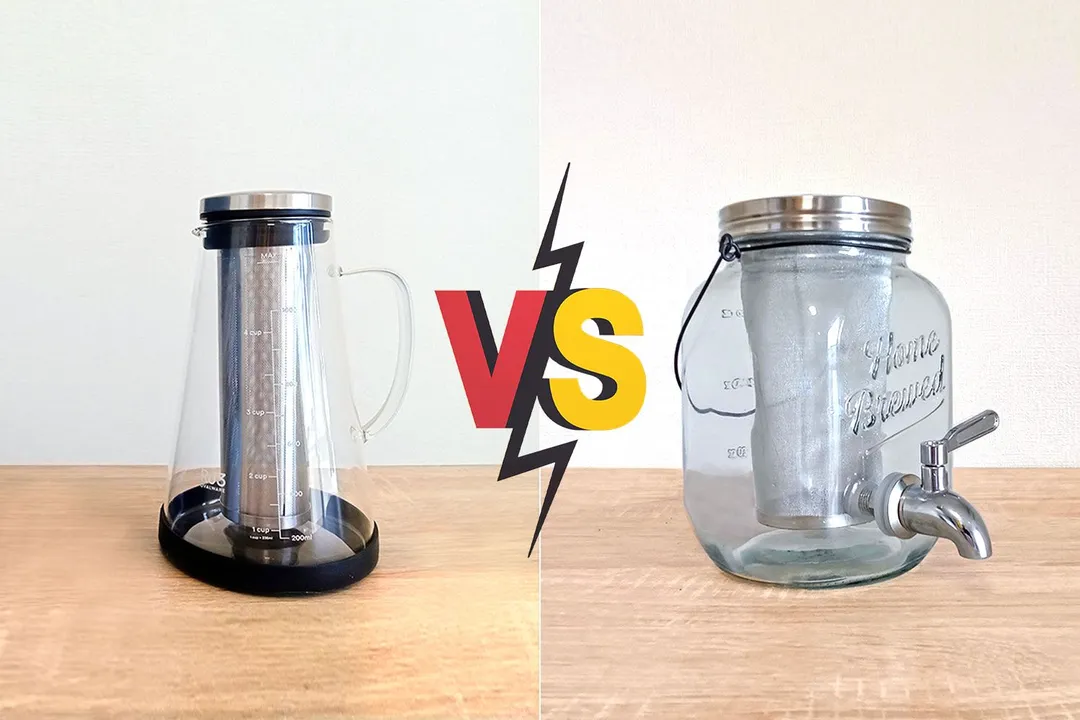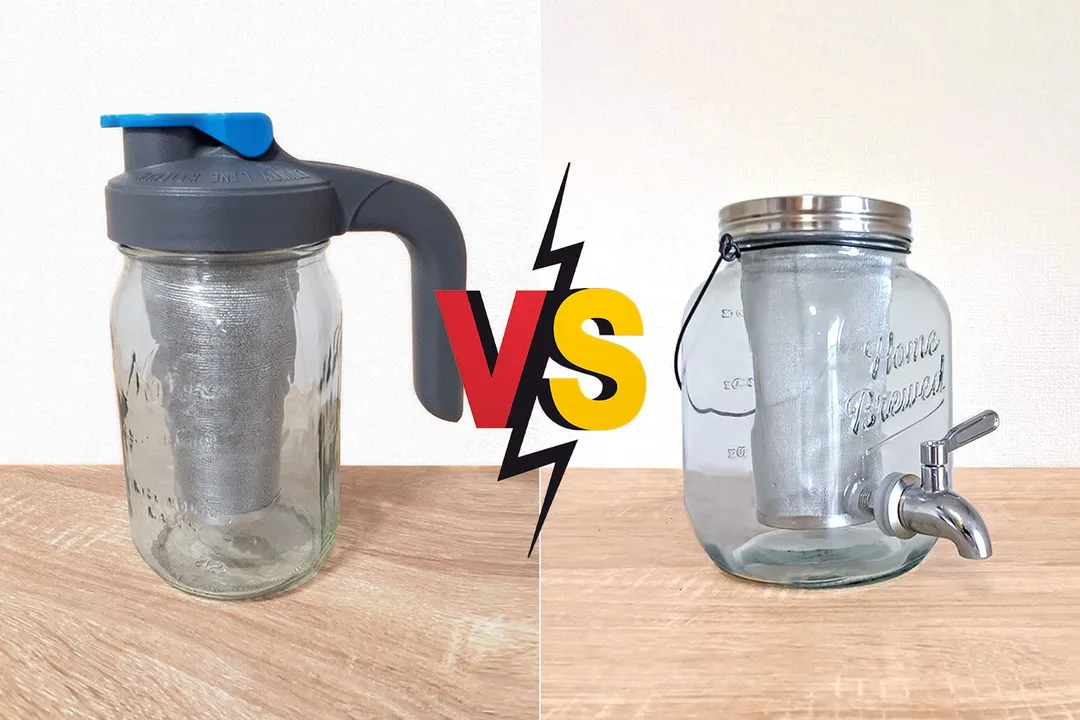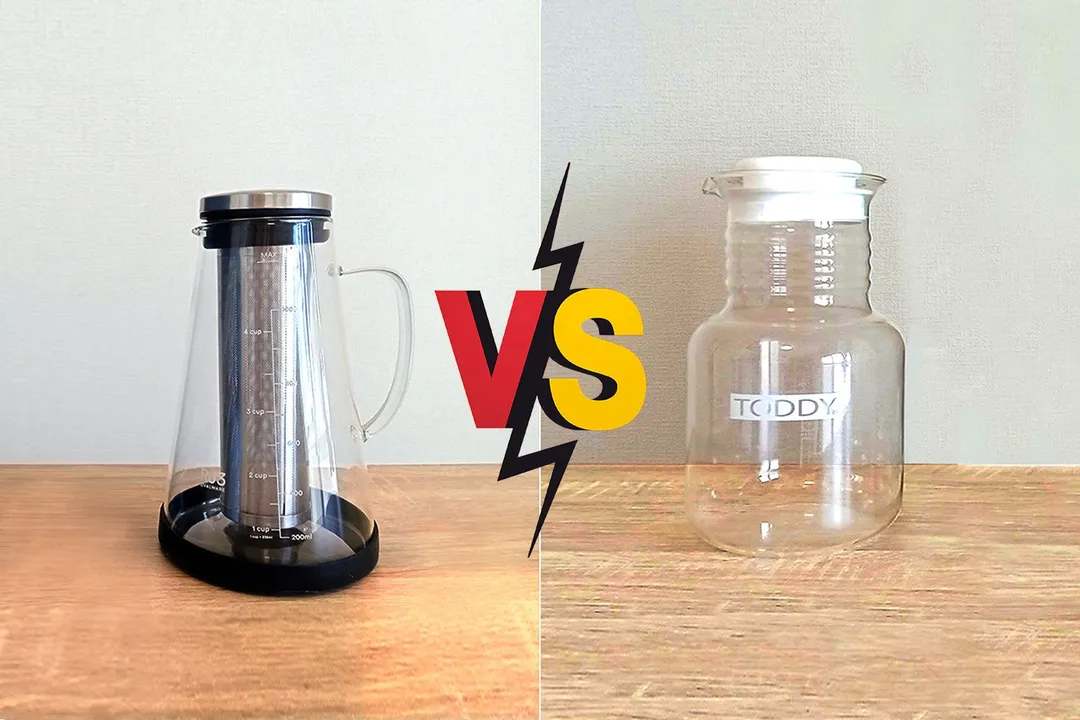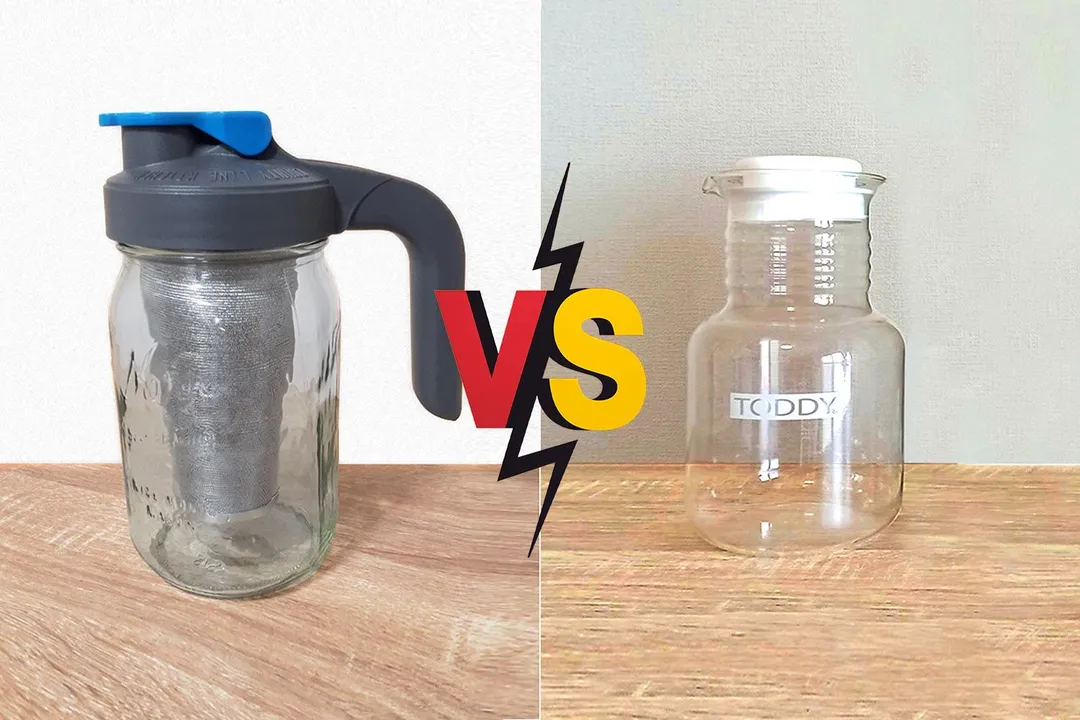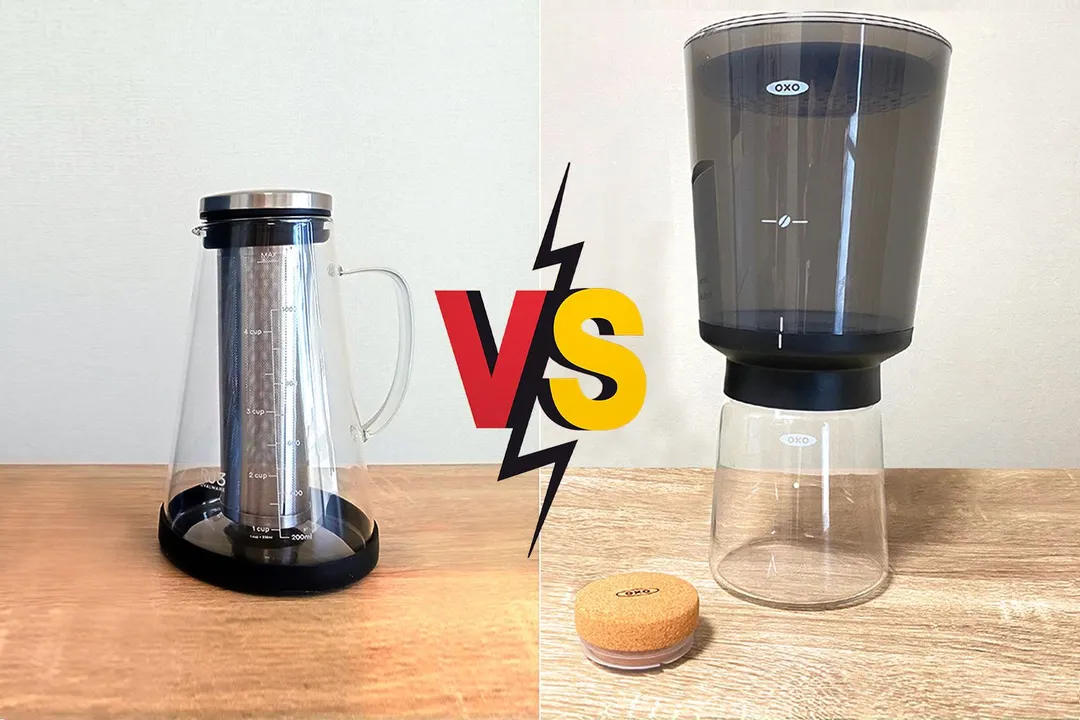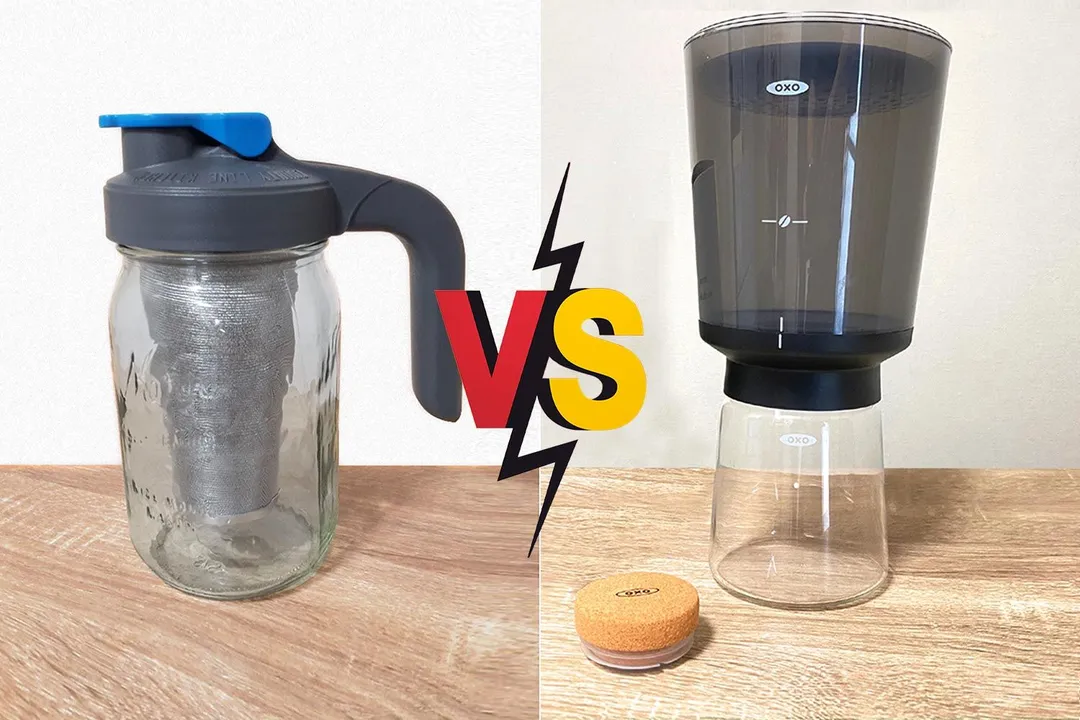Our recommendations are made independently through Research & Testing. We may receive commissions from purchases made via our links.
County Line Kitchen vs Ovalware Side-by-Side Comparison
County Line Kitchen cold brew coffee maker vs Ovalware. A back-to-basics choice and cold brew coffee maker with panache.
County Line Kitchen
Tested Using Methodology v1.0Ovalware Cold Brew
Tested Using Methodology v1.0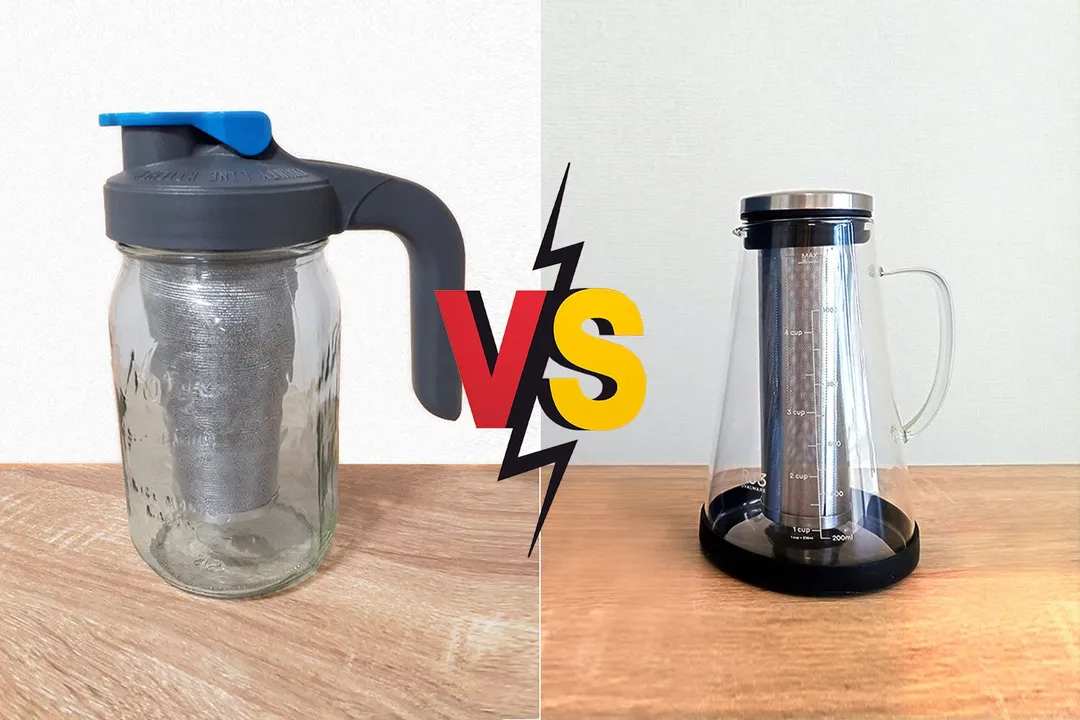
Overall Verdict
County Line Kitchen is a sturdy mason jar adapted for making cold brew coffee. You simply insert the filter or brew core with grounds, add water, and screw on the lid. The brew ratio is 1:9 for either the 1-quart or 2-quart jar. The filter has an airtight seal and the screw-on plastic lid a silicone gasket. The lid has a flip cap for easy pouring, and you can choose between a brewer with or without a handle.
The Ovalware is more of a fancy stylized carafe. Its slender neck and wide base are perfect for cold brew coffee-making, and it comes with an airtight stopper and a silicone base pad. The brew core or filter is a type of lasered stainless steel and the brew ratio is 1:11. The brew is not as strong as the County Line Kitchen, but the quality is much the same.
Both brewers are versatile in that you can also use them for hot brewing and tea making. The County Line Kitchen comes with a traditional mason jar lid, so you can use it just as you would any mason jar.
Pros & Cons
- Versatile product
- Minimal packaging
- Packed and shipped in the US
- Robust and durable
- Airtight silicone gasket
- Brew quality
- Brew markers in cups and ml
- Silicone base pad
- Comfortable handle
- Ease of brewing
- Brew strength average
- Filter not so effective
- Quality and fit of silicone seals
- Additional decanting
- Narrow head for cleaning
Key Specs
Where to Buy
*You help support HealthyKitchen101's product testing and reviews by purchasing from our retail partners.
Analysis and Test Results
Brew Quality
Bouquet
Drinkability
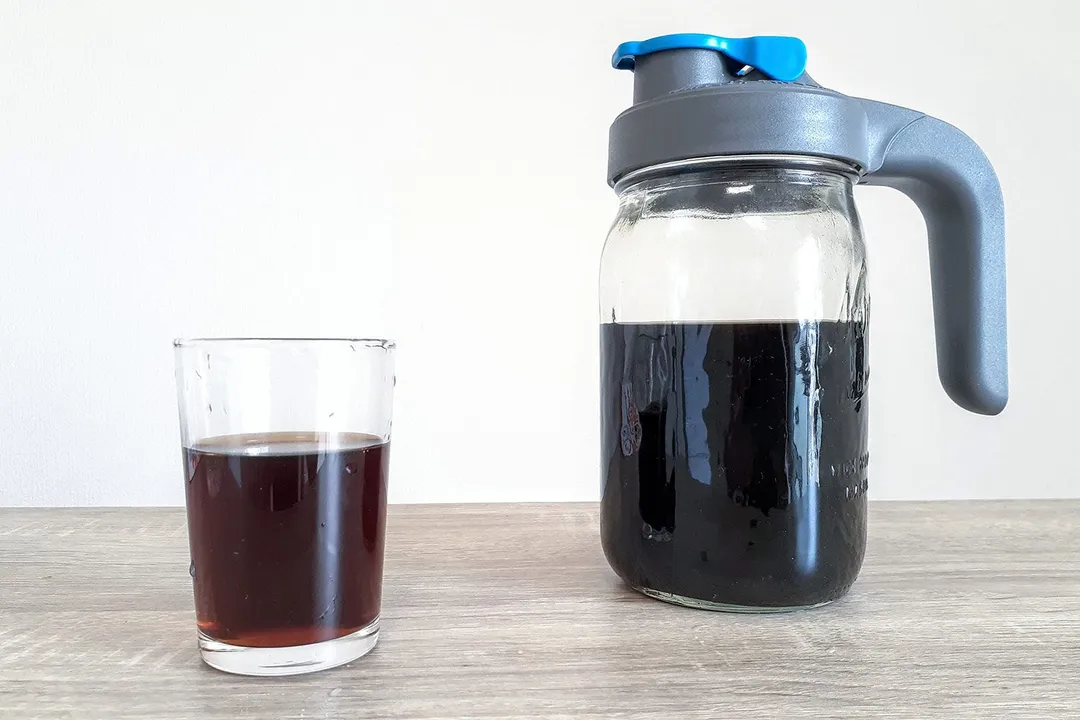
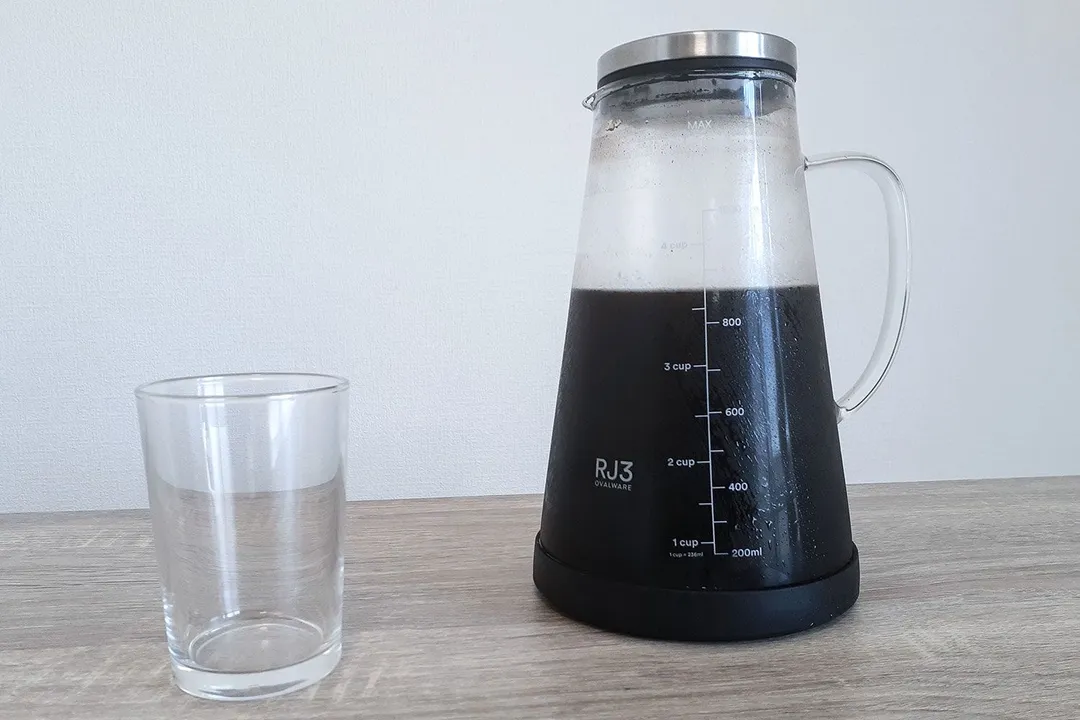
Sediment
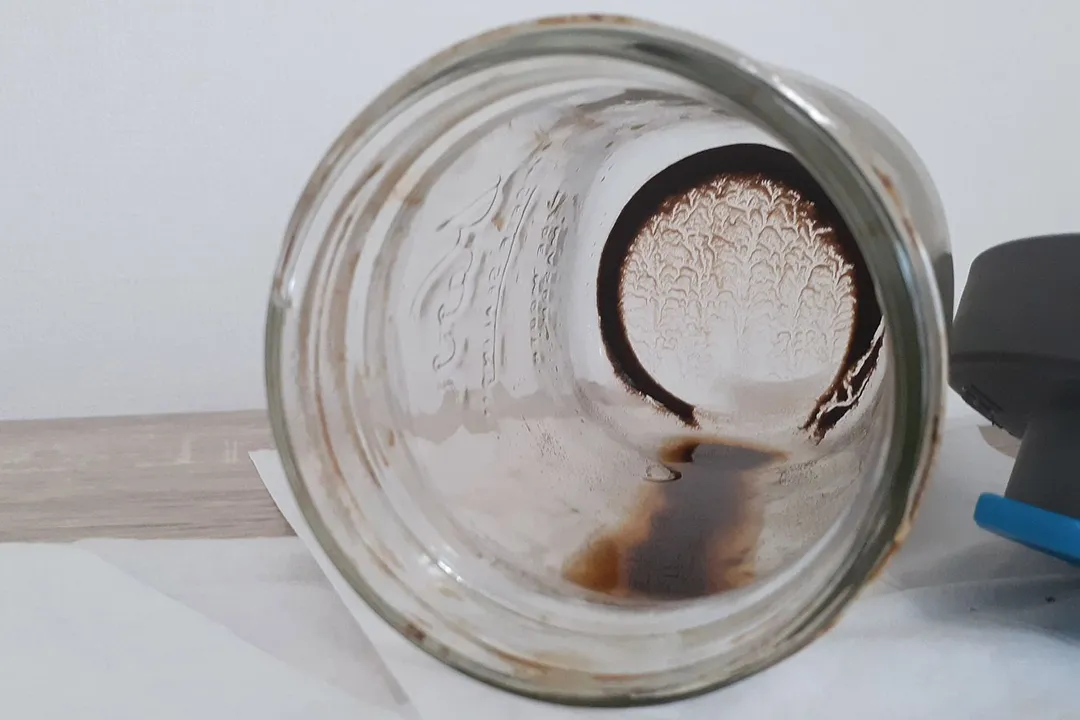
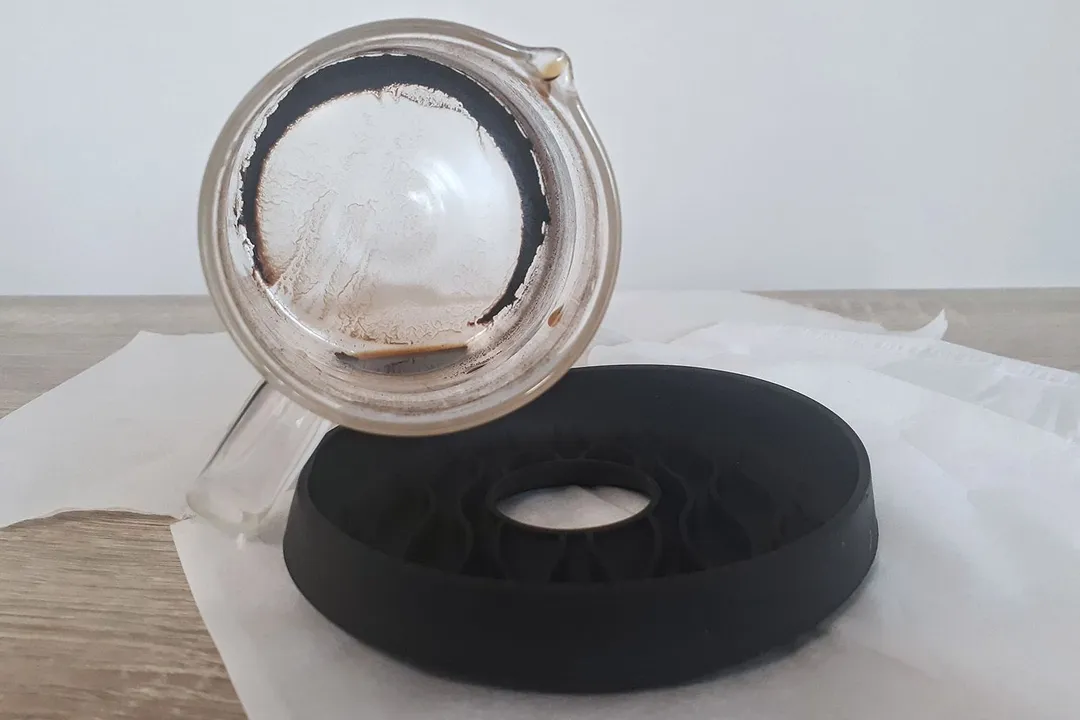
Design
In the Box


Decanter

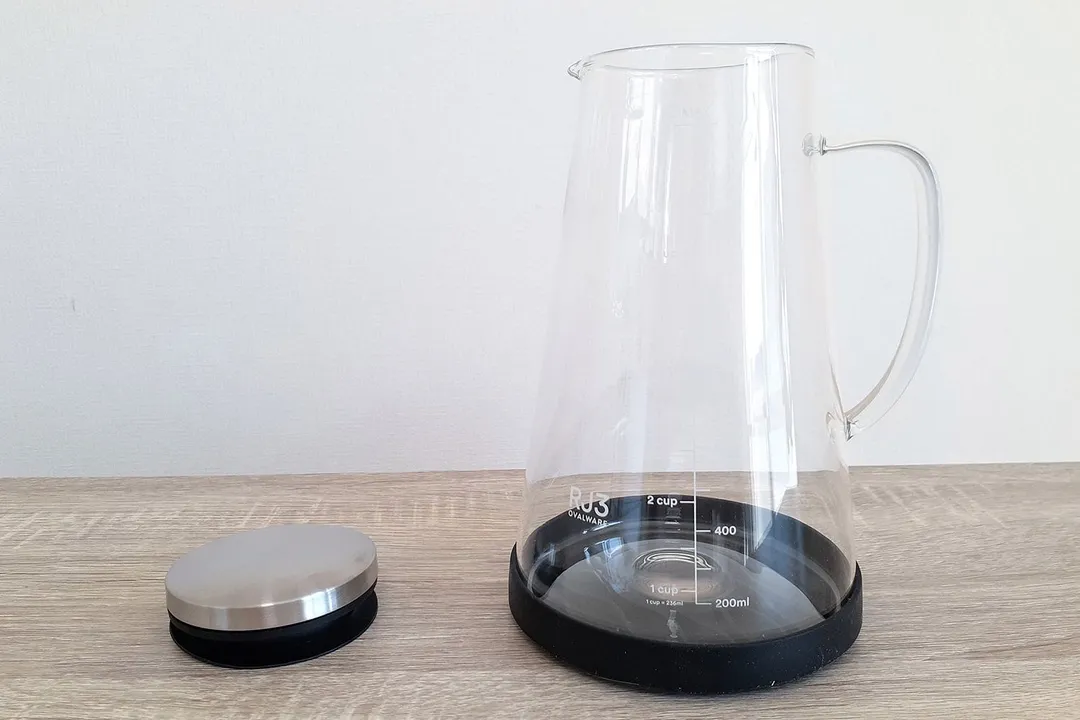
Stopper / Lid
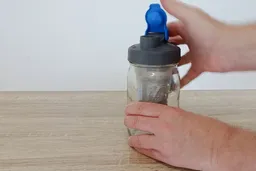
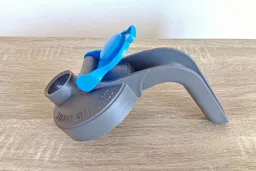

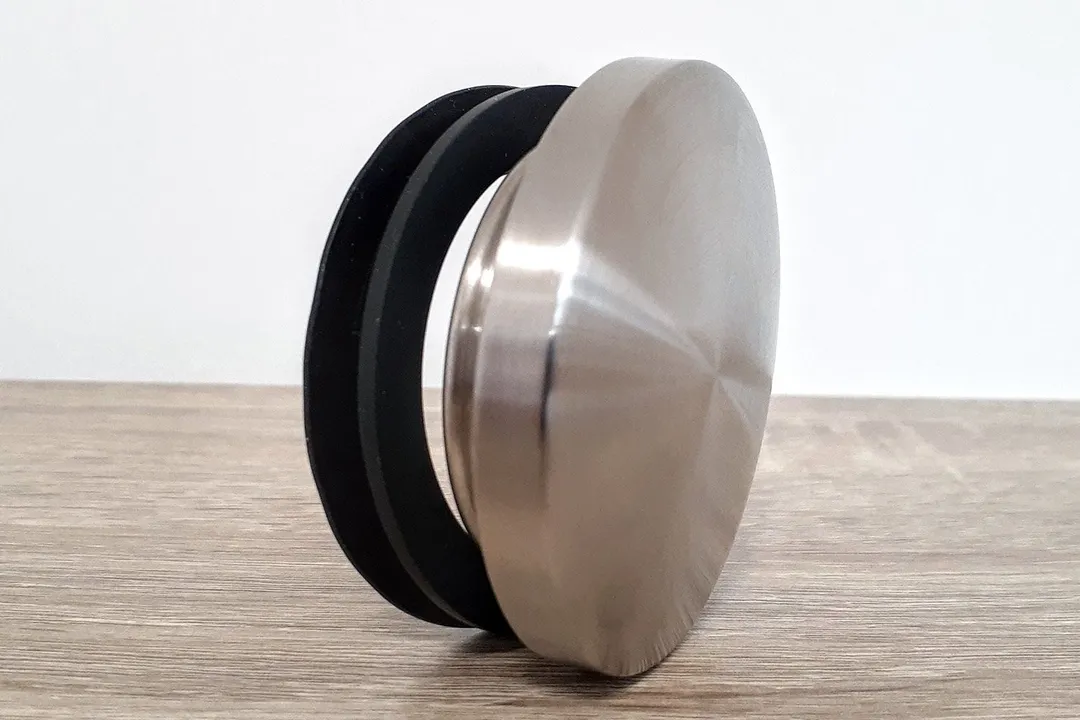
Filter
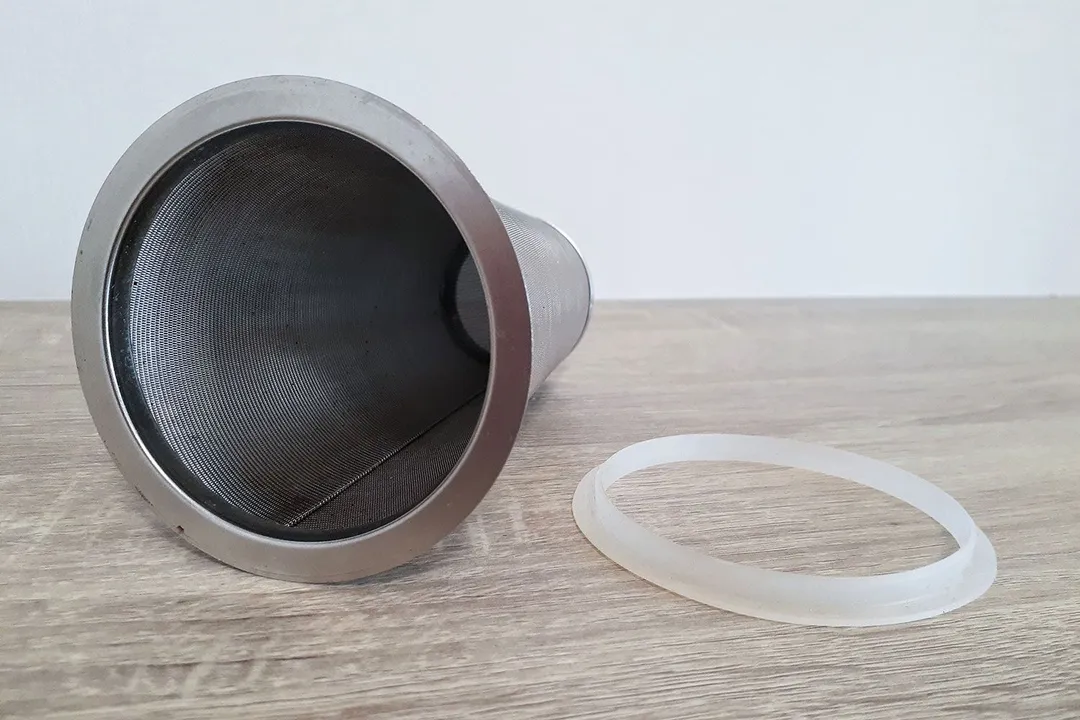

Build Quality
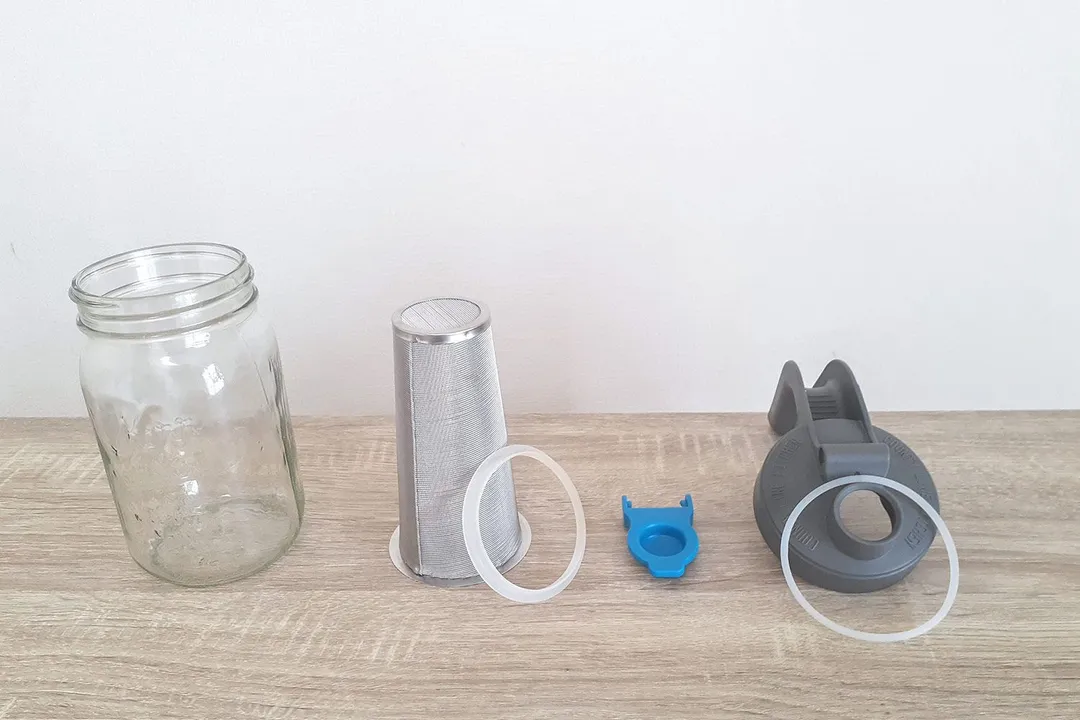
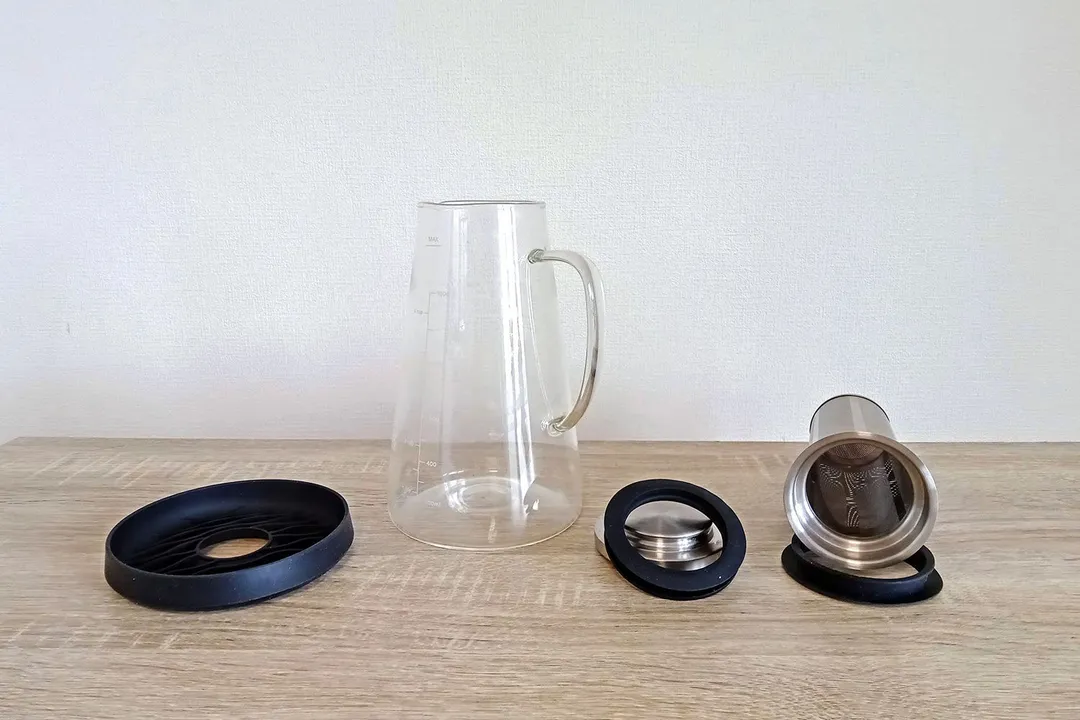
Usability
Brewing

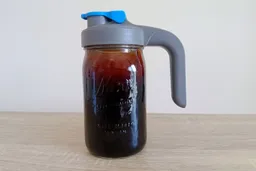
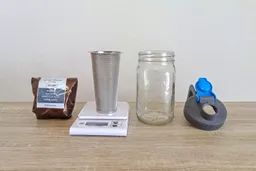
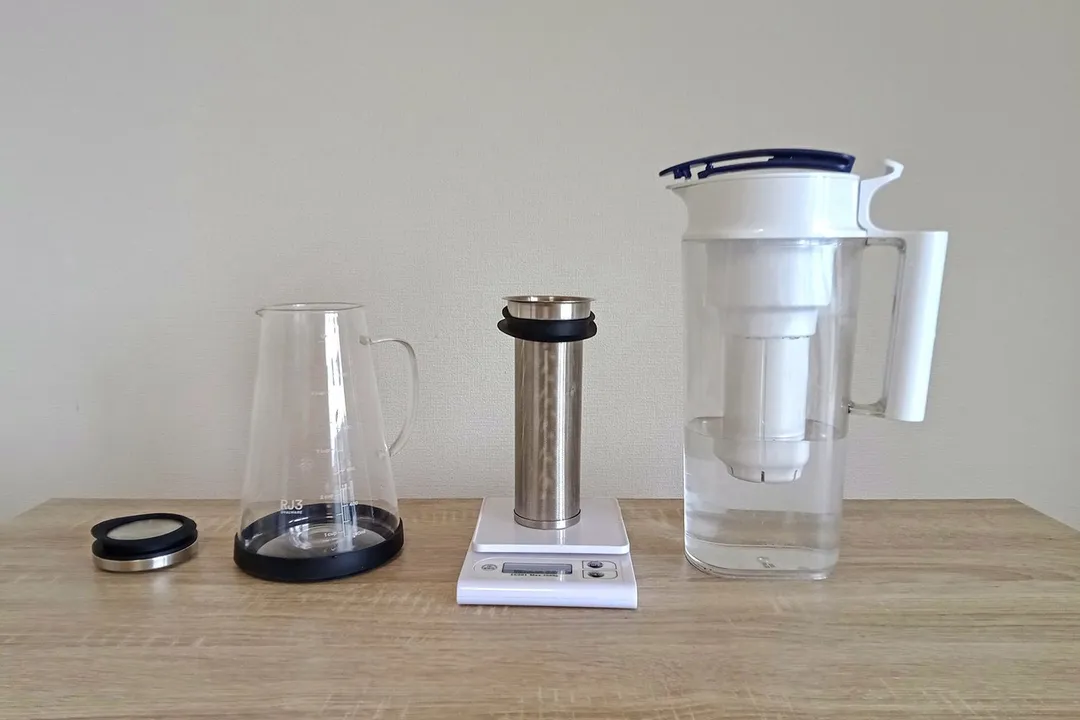
Decanting
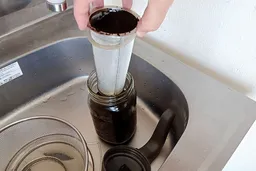
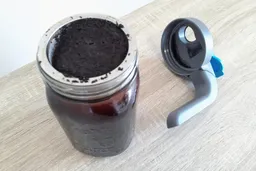
Cleaning and Storage
Behind the Comparison
Roger Shitaki is a writer, author, and editor. His niches are household appliances, health & wellness, and travel. He’s a freelance contributor to a Tokyo lifestyle website and a leading ophthalmology magazine in Asia.

